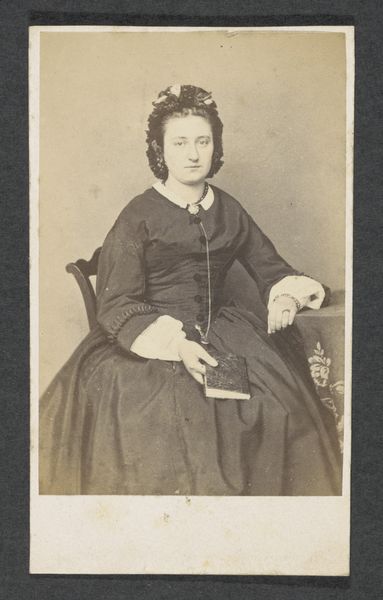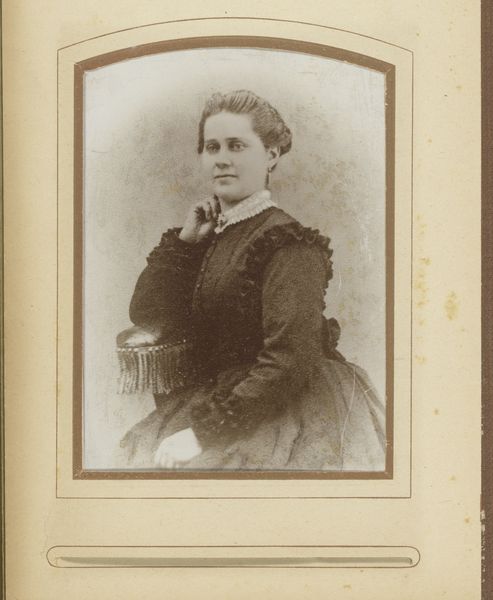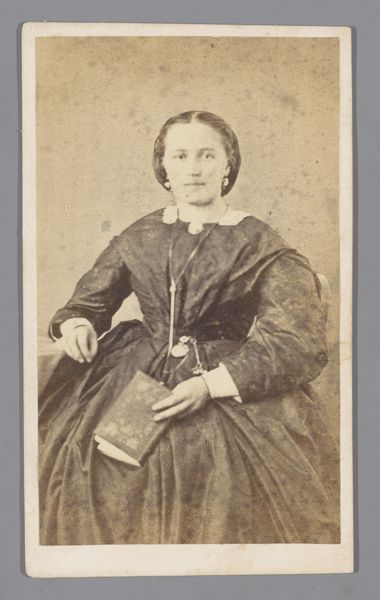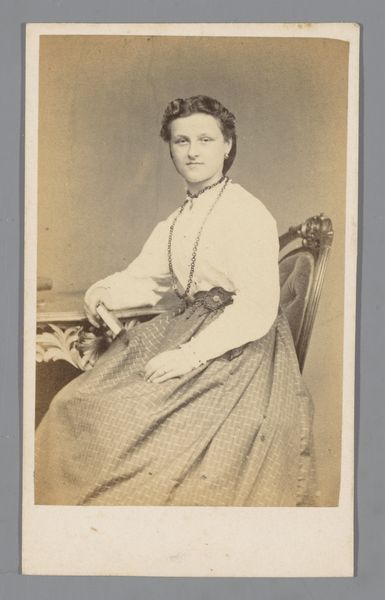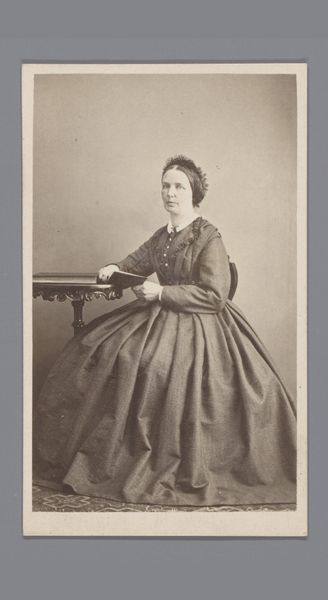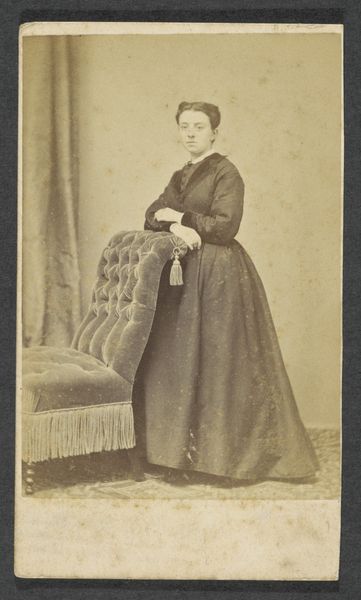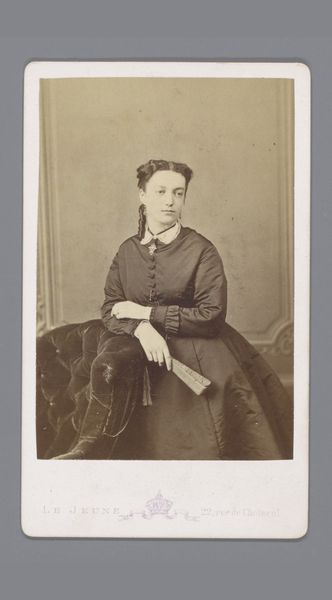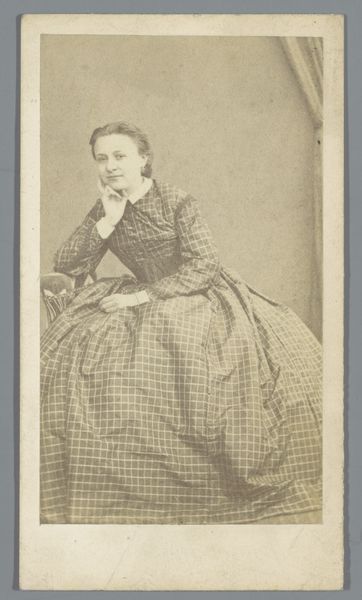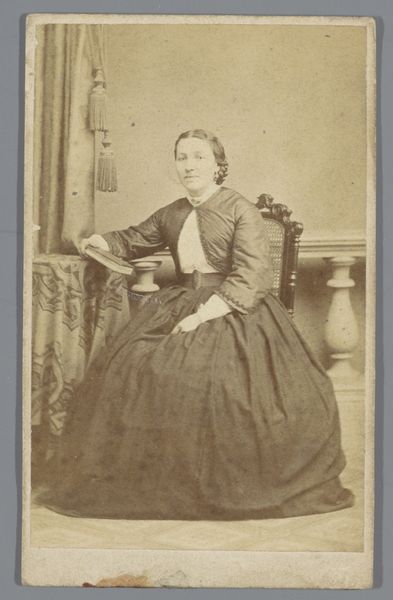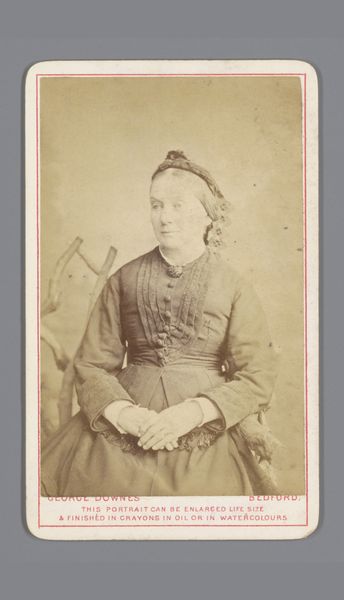
daguerreotype, photography
#
daguerreotype
#
photography
#
realism
Dimensions: height 103 mm, width 64 mm
Copyright: Rijks Museum: Open Domain
Curator: A subdued, almost somber, atmosphere pervades this portrait. It's as if a weight of unspoken narratives presses against the frame. Editor: Indeed. This is a photographic piece entitled "Portret van een onbekende vrouw," crafted between 1865 and 1866 by Jules G\u00e9ruzet. A daguerreotype, this process renders incredible detail and tonal range, and it's interesting to consider the rise of photography's impact on painting at this moment in time. It would have become cheaper to have a photo portrait done than sitting for a painting. Curator: That explains the realism, which is immediately evident in her steady gaze and the unidealized depiction of her features. But what fascinates me is her dress – the fabric seems to ripple and fold with a life of its own, drawing the eye into its textures and construction. We're looking at silk, presumably. Its expense speaks of a certain social standing. Editor: Exactly! The materiality here is crucial. Look at how G\u00e9ruzet uses the photographic process to render the qualities of the cloth; the success of commercial photography depended on demonstrating a mastery over mimetic detail and high quality prints. The daguerreotype process, still in use at this date, was complex, labor-intensive, and inherently implicated within evolving class dynamics of the era. Curator: And her hands, clasped so demurely, hint at the expected societal role she occupied. What sort of expectations were in place in society, demanding certain performances of class and beauty? These things are deeply embedded in her posture, aren't they? Editor: Undoubtedly. Every element—from the choice of fabric to the pose—contributes to a carefully constructed representation. It almost feels like the photograph as commodity, reflecting social standing through material goods that in turn required labor from seamstresses, retailers, photographers...all participants in image production. Curator: Thinking about all these processes allows one to appreciate even further the work behind this image. Editor: It certainly illuminates a more nuanced reading of this photograph. Thank you.
Comments
No comments
Be the first to comment and join the conversation on the ultimate creative platform.
